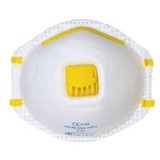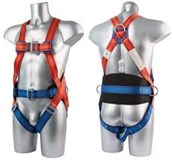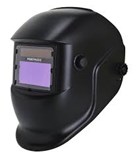
1.Understand the Role of Your Personal Protective Equipment (PPE).
Each type of PPE is engineered to protect workers against occupational hazards. Safety glasses protect a worker’s eyes from contact by objects and debris. Wraparound goggles provide side protection and some designs will reduce liquid and vapor penetration. Laboratory coats and secondary disposable PPE wear may offer protection against chemical spills, splashes and arc flash hazards. However, the correct fabric and materials must be selected, as not all apparel meets proper repellent and flame test standards.
Gloves should be selected carefully for the types of hazards present of the job. Cut-resistant gloves are needed around sharp machinery, while chemical-resistant gloves are needed for lab and some manufacturing work.
2. Know the Situations When PPE Should Be Used.
Following HSE guidelines is the recommended action for deciding what PPE should be used and when it is required. In any area where workers face airborne debris, safety glasses must be used. Hard hats are required for construction sites and any environments where workers face the hazard of falling objects. Protective apparel, gloves, boots and masks are required in many different operations including those that involve chemicals and flame / burn hazards.
3. Design a PPE Program.
Employers are required to provide workers with the tools and safety equipment needed to perform their jobs. Training requirements include knowing when the PPE is needed and what type is required.
Employees must understand how to use or wear safety equipment. If it is not used correctly, it does not provide necessary protection.
This training program should also include how to inspect equipment and when new PPE should be requested. Checklists should be made available to supervisors and one or more individuals assigned to maintain training records and assurance programs.
4. Understand the Necessary Steps in Selecting Appropriate PPE for Your Work Environment.
You want your PPE to actually provide protection and it will not do this if it is substandard. When you select equipment, you must pay attention to the manufacturer’s ratings and test results. Testing that is conducted in situations that simulate how the garment or other PPE is to be worn in actual workplace scenarios produce the most accurate performance ratings. Make sure that each piece of PPE meets current guidelines.
Check out the manufacturer of the product and what compliance ratings the equipment is designed to meet. Just because an item is fire resistant does not mean that it is appropriate in the workplace. Additionally, read the labels for contents. Fabrics designed to protect against a chemical spill are not always the same as those designed to protect against flame.
Many disposable garments claim to meet current standards but offer little protection to repel hazardous and non-hazardous chemicals as well as melt when exposed to flame. The items you choose for PPE must meet the hazards of your workplace.
5. Obtain Program Support and Promote Internally.
All employees in a facility must be involved in safety training for any areas where they work. Safety training is mandatory and managers and supervisors should be onboard when it comes to PPE requirements.
Holding training sessions and meetings can get the safety program started. All employees must be held accountable for the use of PPE once they have signed training documents.
6. Perform Regular Maintenance Inspections.
Like most equipment, PPE will wear out over time. Many items have expiration dates and must be removed from service after this date. A hard hat should be in use for no longer than five years and the date it is first placed ins service should be recorded inside the hat. Some PPE items are required to be replaced after an incident or if it becomes soiled to ensure protection for the wearer is not compromised.
While PPE protects you in the event of an accident, it does not prevent the accident itself. By establishing safety guidelines and training workers in the correct use of PPE, your facility will be safer and any accidents will be less likely to end in injury.










